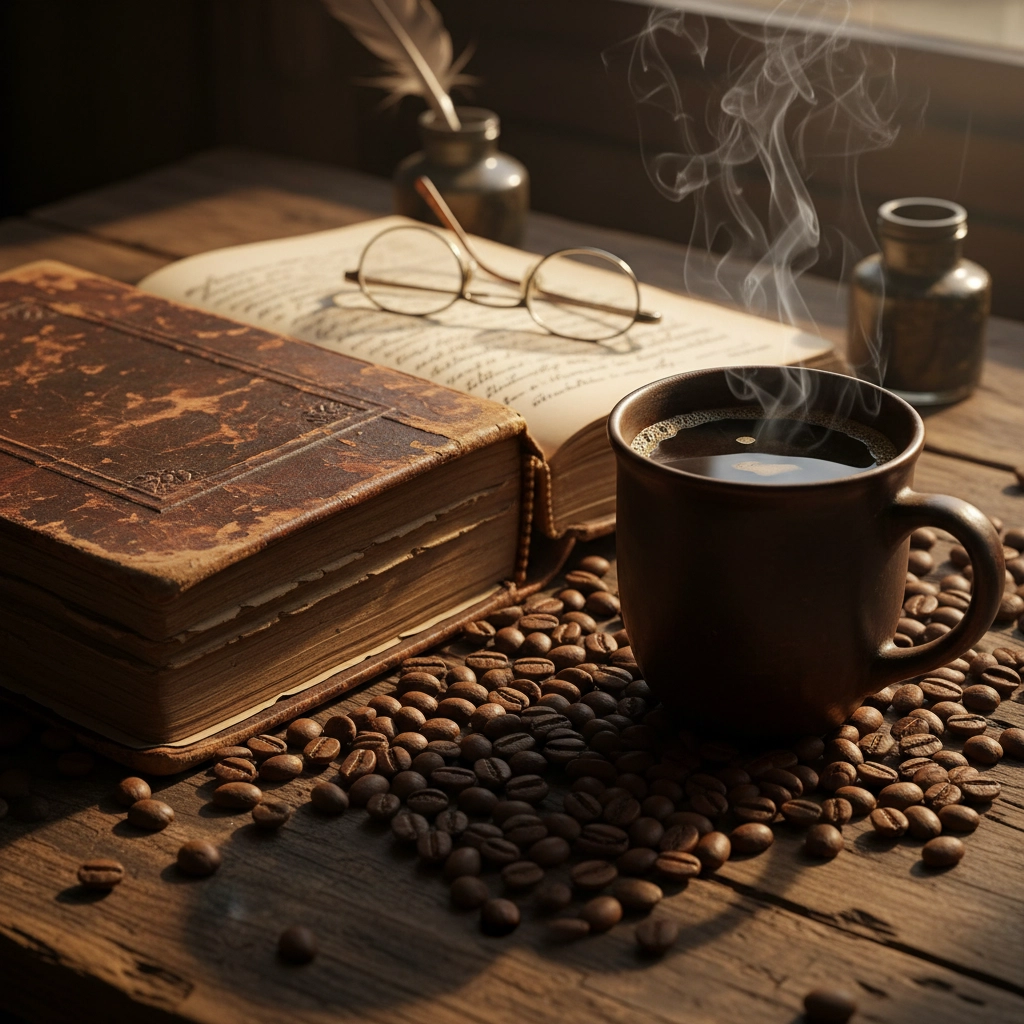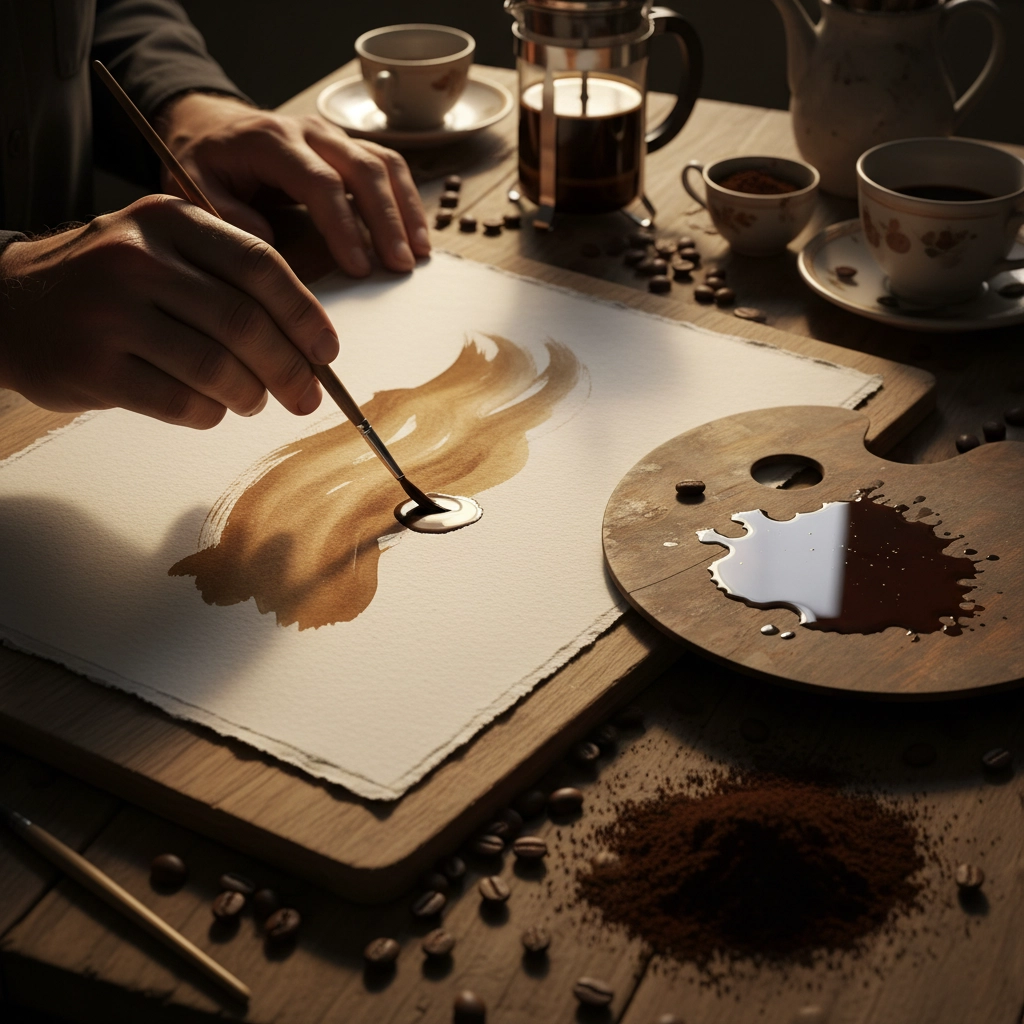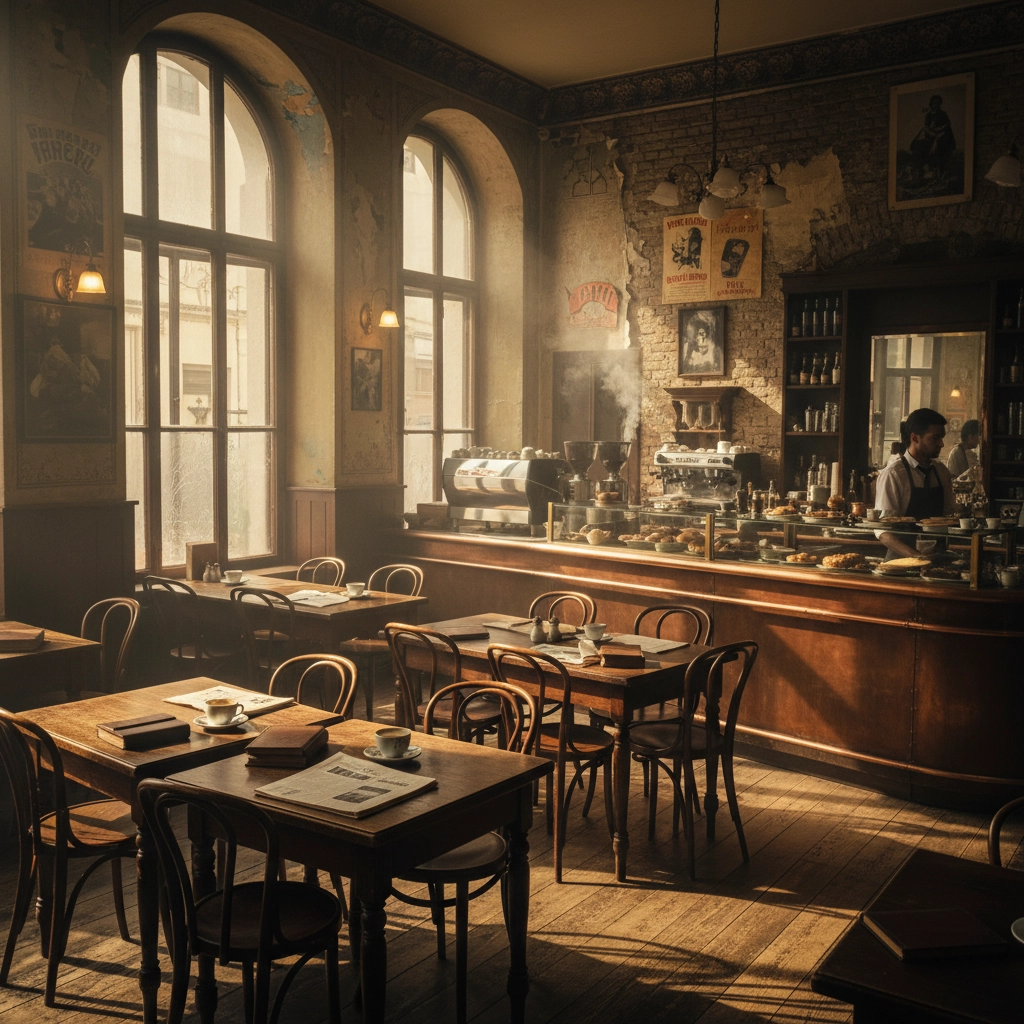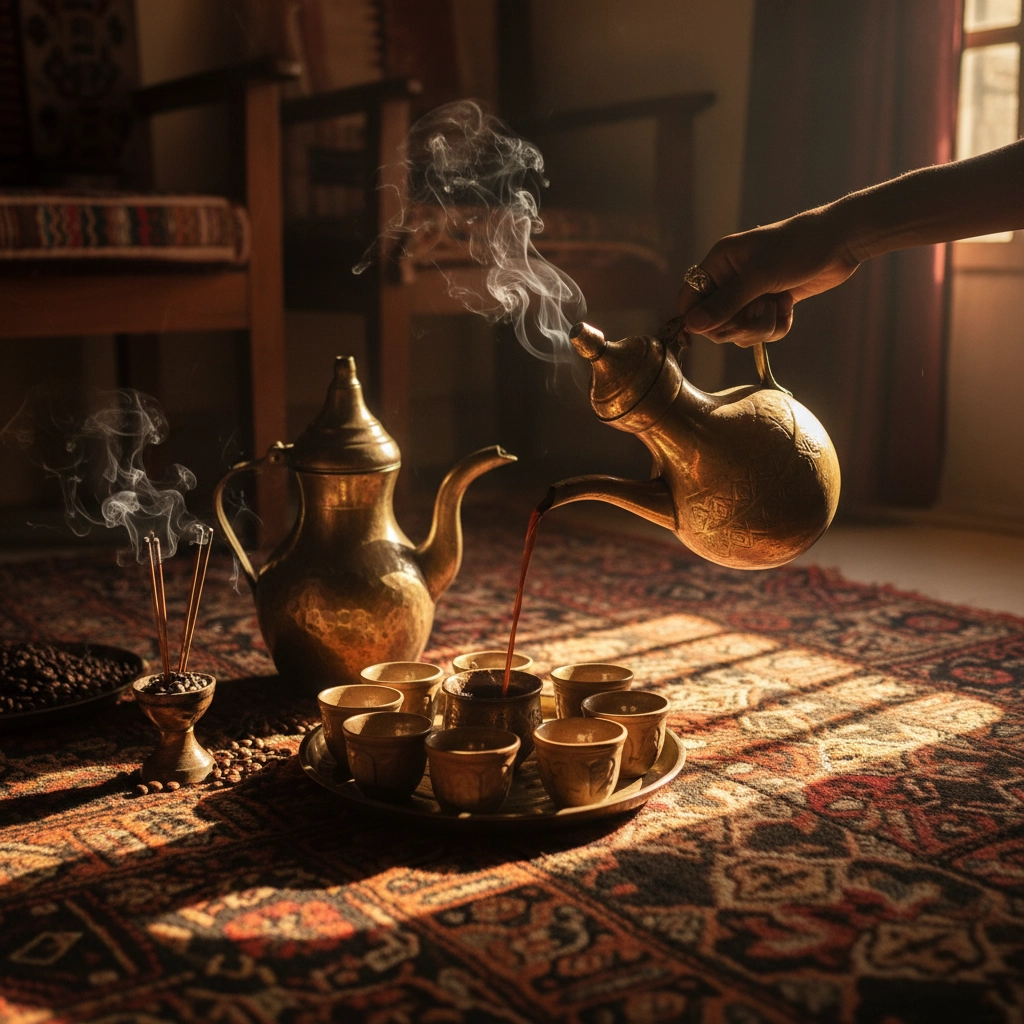Coffee isn't just a morning pick-me-up: it's been fueling creativity for centuries, inspiring everyone from famous novelists to renowned painters. The rich, complex relationship between coffee and artistic expression runs deeper than most people realize, weaving through literature, visual arts, and creative culture in fascinating ways.
The Literary Love Affair
Writers have long understood coffee's power as both fuel and muse. Take Honoré de Balzac, the French novelist who famously consumed dozens of cups daily, believing coffee was essential to his creative process. He didn't just drink it: he wrote about it, describing coffee as a necessary elixir that transformed his mind into a creative powerhouse.
In literature, coffee operates as a multifaceted symbol representing warmth, awakening, companionship, and sometimes anxiety. Ernest Hemingway masterfully used coffee as an emblem of endurance in "The Old Man and the Sea," where Santiago drinks coffee to stay alert during his grueling ocean journey. The simple act of drinking coffee becomes a metaphor for determination and survival.

Truman Capote created one of literature's most haunting coffee scenes in "In Cold Blood," where characters share a cup in what appears to be a moment of normalcy: making the subsequent violence all the more jarring. Coffee becomes a bridge between the ordinary and extraordinary, the calm before the storm.
Modern writers continue this tradition. In contemporary novels, coffee shops serve as crucial meeting places where characters have life-changing conversations, discover truths, or find solace from chaos. Even fantasy literature embraces this: think of the Three Broomsticks in Harry Potter, where important revelations happen over warm beverages.
For those seeking inspiration in their own creative endeavors, there's something magical about savoring a cup of our French Roast while diving into a good book or brainstorming your next project.
Coffee as Artistic Medium
Visual artists discovered early on that coffee could be more than just a beverage: it could be paint itself. Coffee painting, or "coffee art," uses the natural pigments in coffee to create stunning artwork. By diluting coffee to different concentrations, artists achieve a range of tones from light sepia to deep chocolate brown.
Gustav Klimt and Jean Metzinger painted iconic coffeehouse scenes, capturing the social energy and cultural significance of these gathering spaces. Their works immortalized the café culture that became synonymous with intellectual and artistic exchange.

Contemporary coffee artists push boundaries by using actual coffee grounds to create texture, making landscapes that seem to breathe with organic life. Some create sculptures incorporating coffee cups and beans as symbols, turning everyday objects into profound artistic statements.
The ritual of coffee preparation itself becomes performative art. The careful grinding, the precise timing, the aromatic steam: it's a sensory experience that awakens creativity before the first sip touches your lips.
Coffeehouses: The Original Creative Hubs
Paris, Vienna, New York: these cities built legendary coffeehouse cultures where artists, writers, and thinkers congregated. These weren't just places to grab caffeine; they were creative incubators where major art movements were born.

The atmosphere of these spaces fostered collaboration and inspiration. The gentle hum of conversation, the clink of cups, the rich aroma filling the air: all created an environment where creativity flourished. Writers found characters in fellow patrons, painters discovered subjects in the interplay of light and shadow, and musicians heard rhythms in the everyday sounds.
This tradition continues today. Modern cafés serve as informal offices for freelancers, meeting spots for creative collaborations, and quiet corners for artistic contemplation. There's something about the café environment that unlocks creative potential: perhaps it's the perfect balance of stimulation and comfort.
Starting your morning with our Breakfast Blend can help recreate that café inspiration right at home, turning your kitchen into a creative sanctuary.
The Science Behind Coffee and Creativity
Research backs up what artists have known intuitively: caffeine enhances cognitive function, improving focus and problem-solving abilities. Coffee doesn't just wake us up: it literally helps our brains make new connections, facilitating the kind of innovative thinking that drives artistic breakthroughs.
The ritual aspect is equally important. The anticipation as coffee brews, the first aromatic inhale, the moment of tasting: these create meditative experiences that prepare the mind for creative work. It's why so many writers have specific coffee rituals that signal the start of their creative day.
Coffee also affects mood in ways that enhance creativity. The mild euphoria from caffeine can help artists push through creative blocks and approach problems from new angles. It's the difference between staring at a blank page and suddenly seeing possibilities everywhere.
Cultural Significance Across the Globe
Different cultures have woven coffee into their artistic traditions in unique ways. Ethiopian coffee ceremonies are performance art in themselves, with elaborate rituals that turn coffee preparation into spiritual and social experiences. Italian espresso culture influenced countless films and novels about la dolce vita.

In Turkish culture, coffee fortune-telling (tasseography) turns the residue in coffee cups into artistic interpretation and storytelling. Arabian coffee culture inspired poetry and music, with complex brewing methods that became artistic expressions in their own right.
Each culture's relationship with coffee has generated its own artistic vocabulary: from the dramatic Italian café scenes in Federico Fellini films to the contemplative coffee moments in Japanese literature that reflect deeper philosophical themes.
Contemporary Coffee Artistry
Today's coffee culture has spawned entirely new art forms. Latte art transforms morning coffee into edible masterpieces. Coffee competitions showcase brewing as performance art, with baristas as skilled performers creating sensory experiences.
Social media has given birth to coffee photography as an art form, with millions of images celebrating the aesthetic beauty of coffee in all its forms. The rise of specialty coffee has made origin stories and processing methods part of the artistic narrative: each cup tells a story of place, people, and process.
For those who appreciate complexity in their coffee experience, our Whiskey Barrel Aged coffee offers layers of flavor that unfold like chapters in a great novel.
Writers today often incorporate detailed coffee knowledge into their characters' development. A character's coffee preferences reveal personality traits: the executive who drinks espresso, the artist who savors pour-over, the academic who nurses endless cups of drip coffee while grading papers.
The Creative Ritual
Perhaps coffee's greatest gift to artists is the ritual itself. The daily practice of making coffee becomes a creative warm-up, a transition from sleep to wakefulness, from ordinary consciousness to creative flow. The repetitive motions of grinding, brewing, and savoring create space for ideas to surface.
Many artists swear by their morning coffee ritual as essential creative preparation. It's not just about the caffeine: it's about creating a sacred space in time where creativity can emerge. The act of making coffee mindfully becomes a form of meditation that opens artistic channels.
Whether you prefer the comfort of our Gourmet Donut Shop blend or the exotic complexity of our Asian Plateau Blend, the right coffee can transform your creative practice from routine to ritual.
Coffee and creativity will always be intertwined. As long as humans create art, coffee will be there: as fuel, inspiration, symbol, and medium. It's a relationship that enriches both the art we create and the coffee we savor, proving that some of life's best partnerships are both simple and profound.




